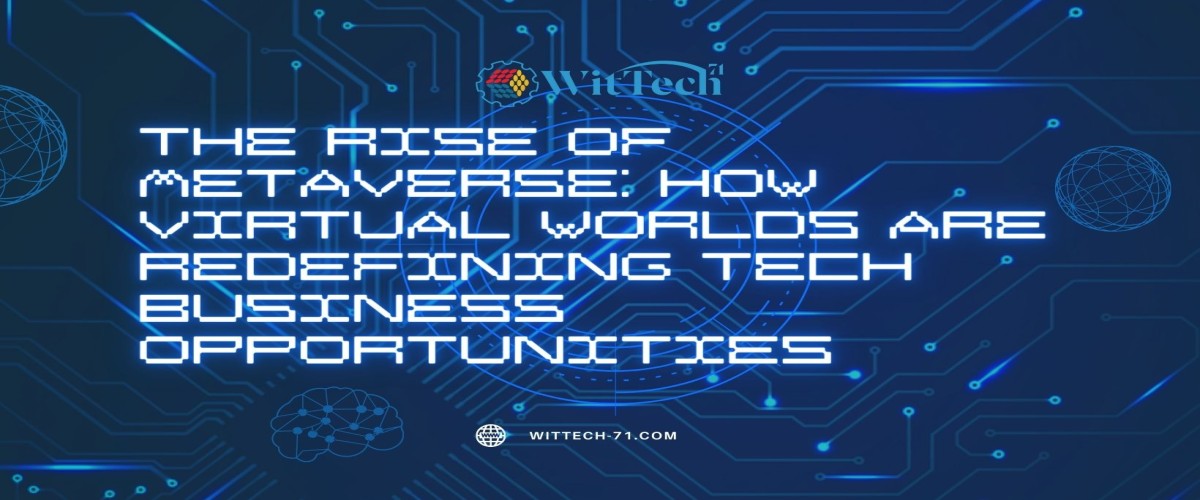How to Develop a Web3 Strategy for Your Business
In the ever-evolving landscape of technology and the internet, the term "Web3" has been gaining significant attention in recent years. Web3 represents a paradigm shift in how we interact with the digital world, and it's more than just a buzzword. It's a fundamental transformation of the internet and the way businesses operate within it. In this article, we'll explore what Web3 is, why it matters, and how to develop a Web3 strategy for your business.
Understanding Web3
To develop an effective Web3 strategy, you first need to understand what Web3 is and how it differs from the traditional web (Web2). Web3 is not just an iteration of the internet; it's a completely new approach to how the internet operates. Here are some key aspects of Web3:
1. Decentralization
Web3 operates on a decentralized architecture, often utilizing blockchain technology. This means that there is no single central authority controlling the network. Instead, data is distributed across a network of nodes, making it more resistant to censorship and fraud.
2. Trust and Security
Trust is a fundamental component of Web3. Transactions and interactions on Web3 platforms are secured through cryptographic techniques. This provides a high level of security and trust, reducing the need for intermediaries like banks or payment processors.
3. Ownership of Digital Assets
Web3 allows individuals to have true ownership of their digital assets. In Web2, users don't have full control over their data or digital possessions, but Web3 changes this by giving users ownership and control over their data, tokens, and other digital assets.
4. Smart Contracts
Smart contracts are self-executing contracts with the terms of the agreement directly written into code. They automatically execute when predefined conditions are met, making transactions and agreements more efficient and transparent.
5. Tokenization
Web3 often relies on the concept of tokenization, where real-world assets are represented as digital tokens on a blockchain. This opens up new opportunities for fractional ownership and trading.
6. Interoperability
Web3 is designed to be more interoperable. Different blockchains and platforms can interact and share data, making it easier to build complex applications that span multiple ecosystems.
7. Web3 Applications
Web3 applications, often called decentralized applications or DApps, are a key part of this new ecosystem. These apps are built on blockchain technology and are designed to offer various services without relying on a central authority.
Now that you have a basic understanding of Web3, let's explore why it's important for businesses.
Why Web3 Matters for Businesses
Web3 has the potential to disrupt various industries and change the way businesses operate. Here are some reasons why it matters:
1. Enhanced Security and Trust
With Web3's decentralized and cryptographic nature, businesses can enhance security and trust in their transactions and data. This is particularly valuable in industries like finance, where trust and security are critical.
2. Ownership of Digital Assets
Web3 allows businesses to tokenize their assets, which can be an excellent way to raise capital or increase liquidity. It also enables users to have true ownership of their digital assets, fostering a sense of trust and loyalty.
3. Cost Reduction
By eliminating intermediaries and streamlining processes through smart contracts, businesses can significantly reduce transaction costs. This can be a game-changer, especially in industries that heavily rely on intermediaries.
4. Access to a Global Audience
Web3 applications are typically open and accessible to anyone with an internet connection. This means that businesses can potentially reach a global audience without the need for intermediaries or regional restrictions.
5. Innovation and Competitive Advantage
Being an early adopter of Web3 technology can provide a competitive advantage. It allows businesses to experiment with new models and create innovative solutions that set them apart from the competition.
6. Redefining Business Models
Web3 enables new business models that were previously impossible. For example, decentralized finance (DeFi) projects have redefined the way we think about banking and finance. Businesses can now explore entirely new revenue streams and partnerships.
Developing a Web3 Strategy for Your Business
Now that you understand the significance of Web3 for businesses, it's time to delve into how to develop a Web3 strategy for your specific company. Here are the key steps to get you started:
1. Educate Yourself and Your Team
The first step is to educate yourself and your team about Web3 technology and its potential impact on your industry. This may involve hiring experts or training existing team members. A solid understanding of the technology is crucial to make informed decisions.
2. Identify Business Opportunities
Examine your business and industry to identify opportunities where Web3 technology can make a difference. Consider areas where decentralization, trust, and ownership of digital assets can be leveraged to your advantage.
3. Set Clear Objectives
Define clear and measurable objectives for your Web3 strategy. Do you want to reduce costs, enhance security, reach a broader audience, or create new revenue streams? Setting clear objectives will guide your strategy.
4. Choose the Right Blockchain Platform
Depending on your objectives, you may need to choose a specific blockchain platform or technology to build your Web3 solutions. Consider factors such as scalability, security, and community support when making this choice.
5. Build or Invest in Web3 Applications
Consider whether you need to build your Web3 applications or invest in existing ones. Building from scratch offers more control, while investing in established projects can save time and resources.
6. Experiment and Iterate
Web3 is still a rapidly evolving field. It's important to approach your Web3 strategy with an experimental mindset. Test different solutions, iterate, and adapt as the technology evolves.
7. Regulatory and Compliance Considerations
Pay attention to the regulatory and compliance aspects of Web3 technology. The legal landscape for blockchain and cryptocurrencies can be complex, and it's essential to ensure that your activities are in compliance with local and international regulations.
8. User Education and Adoption
Web3 can be a significant shift for users, and it's essential to educate them about the benefits and how to use your Web3 solutions. Create user-friendly interfaces and provide support for your customers.
9. Partnerships and Ecosystem Engagement
Engage with the broader Web3 ecosystem. Collaborate with other businesses, projects, and communities in the Web3 space. Partnerships can provide valuable insights and open doors to new opportunities.
10. Measure and Analyze
Regularly measure and analyze the performance of your Web3 strategy. Are you meeting your objectives? What can be improved? Use data and feedback to refine your approach.
11. Long-Term Vision
Develop a long-term vision for your Web3 strategy. The technology will continue to evolve, and having a clear vision will help you stay ahead of the curve.
Examples of Successful Web3 Strategies
To better illustrate how businesses are implementing Web3 strategies, let's look at a few examples:
1. Decentralized Finance (DeFi)
DeFi platforms like Compound, MakerDAO, and Aave have created a Web3 strategy that offers lending, borrowing, and trading of digital assets without the need for traditional financial intermediaries. They have leveraged blockchain technology to provide secure and transparent financial services.
2. Non-Fungible Tokens (NFTs)
NFT marketplaces like OpenSea and Rarible have capitalized on Web3 technology to create a market for unique digital assets. Artists, musicians, and creators can tokenize their work and sell it directly to a global audience, with transparent ownership and provenance.
3. Supply Chain Transparency
Companies like IBM Food Trust and VeChain have integrated blockchain technology into supply chains to enhance transparency and traceability. This Web3 strategy allows businesses to track the journey of products from origin to the end consumer, reducing fraud and improving consumer trust.
4. Decentralized Autonomous Organizations (DAOs)
DAOs, such as The DAO and Aragon, are Web3 organizations governed by smart contracts and token holders. They provide a new way for businesses and communities to make collective decisions and manage resources.
5. Web3 Social Networks
Projects like Decentraland and Minds are exploring Web3-based social networks that empower users to control their data and participate in platform governance.
Challenges and Risks
While Web3 offers tremendous potential, it also comes with challenges and risks that businesses need to be aware of:
1. Regulatory Uncertainty
The regulatory environment for Web3 technologies can be uncertain and varies by country. Businesses need to navigate this complex landscape carefully.
2. User Adoption
Getting users to adopt Web3 solutions can be a challenge, as it may require them to learn new concepts and tools. User education is crucial.
3. Scalability
Blockchain networks often face scalability issues, causing slow transaction times and high fees. Businesses need to consider scalability when building on certain blockchains.
4. Security
While Web3 offers enhanced security, it's not immune to vulnerabilities and attacks. Businesses must implement robust security measures to protect their assets.
5. Competition
The Web3 space is becoming increasingly competitive. Businesses need to continually innovate and differentiate themselves to stay ahead.
Conclusion
Web3 is not a passing trend but a fundamental shift in the way we interact with the digital world. It offers businesses the opportunity to enhance security, trust, and ownership while reducing costs and expanding their reach. To develop a successful Web3 strategy, businesses need to educate themselves, identify opportunities, set clear objectives, choose the right technology, and engage with the broader Web3 ecosystem. It's an exciting journey that, when done right, can lead to a more innovative and competitive future for your business. As Web3 continues to evolve, staying informed and adaptable will be key to success in this transformative era.





Comments